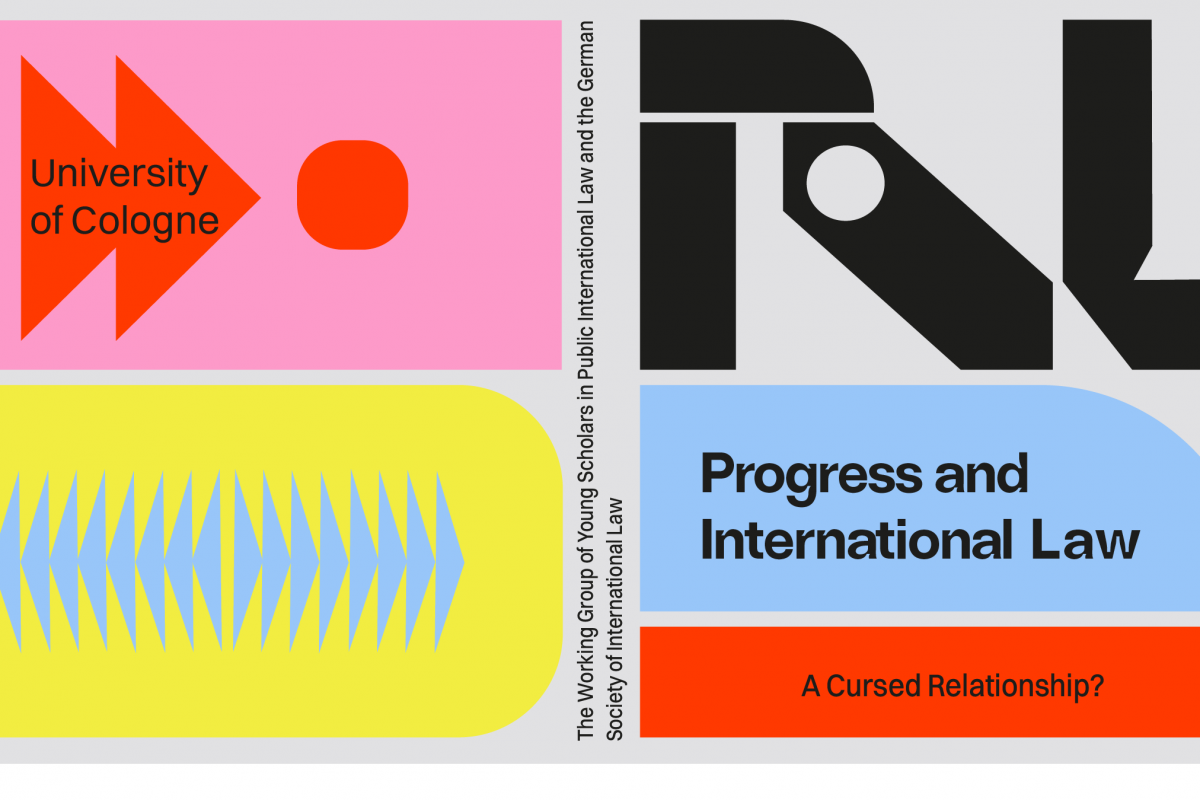Towards a Feminist Interpretation of the ECHR’s Provisions on Access to Abortion
While applications regarding the incompatibility of deadly restrictive abortion policies with the European Convention on Human Rights (‘ECHR’) are piling up before the European Court of Human Rights (‘ECtHR’, ‘Court’), discussions on the manifold aspects of the topic multiply. This blogpost seeks to contribute to such discussions by illustrating how a feminist interpretation of ECHR’s abortion-related provisions, i.e. an interpretation of these provisions in a manner that meets the standards of socialist and post-modern feminist critiques, could find its way into the ECtHR’s jurisprudence. To this end, the contribution will first outline ECtHR’s abortion-related case-law as well as the main points of feminist criticism that this case-law has raised, to subsequently explore how a feminism-informed interpretation could be realised by the Court.
Overview of ECtHR’s Relevant Jurisprudence
Since its earliest jurisprudence on abortion, the Court has clarified that there is no right to abortion under the Convention (Vo v France, para. 80). However, under certain circumstances, the inaccessibility of abortions may give rise to ECHR violations. Indeed, the Court has clarified that once a State has granted through its domestic law the right to abortion, it shall make sure that it is not merely theoretical and that it is accessible in practice (RR v Poland, para. 210; A, B and C v Ireland, paras. 254-265). Precisely, it shall have in place procedures that allow the assessment of whether a person is entitled to abortion under domestic law (Tysiąc v Poland, paras. 128-129) and ensure that pregnant persons can access prenatal tests, so that they can decide whether they would wish to continue their pregnancies (RR v Poland, para. 159). Hence, the Court has been rather eloquent on procedural abortion-related obligations.
Conversely, when it has come to a substantive obligation of States to grant access to abortion, the Court has adopted a non-interventionist approach. Precisely, when three applicants requested the Court to acknowledge as unlawful the Irish abortion law, which allowed abortions only when the pregnant person’s life (not physical and/or mental health) was at risk, the Court found that the State had not exceeded its margin of appreciation (A, B and C v Ireland, para. 241). It found that the prohibition of abortions pursued the legitimate aim of protecting the morals in Ireland, of which foetal life protection was an aspect (para. 222). It further noted that although there was a consensus among the ECHR Members regarding access to abortion on broader grounds, this consensus did not impact the wide margin of appreciation of the State in this sensitive field (para. 236). After all, the Court underlined that the pregnant persons had the alternative of abortion travelling (para. 241). Thus, it concluded that a fair balance between competing interests had been struck.
Other than that, the ECtHR has acknowledged a violation of the prohibition of inhuman and degrading treatment under ECHR Article 3, when a pregnant teenager and rape survivor was obstructed from accessing abortion, even though she qualified therefor under the domestic law (P and S v Poland), and when a woman was obstructed from accessing prenatal tests that would have enabled her to access abortion under the domestic law due to foetal impairment (RR v Poland). Finally, although several applicants have brought claims before the Court under ECHR Article 14 noting the discriminatory background of restrictive abortion laws, the Court has not deemed it necessary to assess these claims (Tysiąc v Poland, paras. 136-144; P and S v Poland, para. 170; A, B and C v Ireland, paras. 269-270).
Feminist Critique of the Court’s Jurisprudence
As the above overview indicates, the ECtHR has adopted such narrow interpretations that, unless States voluntarily provide broader protection through domestic legislation, access to abortion will need to be afforded to pregnant persons only if their life is endangered. Those who are not covered by these abortion laws can resort to ‘abortion travelling’. In this context, feminist scholars have raised various points of criticism.
Firstly, socialist feminists have highlighted that the supposed alternative of ‘abortion travelling’ is not accessible to persons who cannot afford it (Avolio, pp. 24-28; Hoggart, p. 99) or to persons facing travel restrictions (Dannenbring and Rimkus). This is an actual alternative only for persons who have the socioeconomic means to realise abortion trips. Secondly, from a post-modern feminist viewpoint, the Court’s reasoning, whereby pregnant persons’ rights are weighed ‘against other competing rights and freedoms’, such as the interests of the ‘foetus’ or its ‘father’ (see Boso v. Italy) have been criticised as annihilating pregnant persons’ selfhood (Avolio, p. 11): Once a person is pregnant, their selfhood and the extent to which they are owed protection of their physical integrity lessens as others’ interests come into play.
Furthermore, the ECtHR has been criticised for its inconsistent application of Article 3 in abortion-related cases. Precisely, to assess whether the required minimum level of severity is met, the Court focuses on the pregnant person’s vulnerability, which it identifies behind parameters that are external to the pregnant persons’ control, such as their age, or the foetus’ abnormality, or the fact that the pregnancy was a result of rape (Avolio, p. 15; Jaggar, p. 354). Doing so, victimises pregnant persons, who must be presented as ‘blameless’ for their abortion to be justified, and for the inaccessibility of abortion to qualify as inhuman or degrading treatment.
Against this background, it seems that a feminist interpretation of the ECHR would have to first not acknowledge abortion travelling as a lawful alternative to access to abortion; second, to not justify access to abortion on grounds that victimise the pregnant person; and even better, it would need to not engage in an annihilating balancing exercise between the pregnant persons’ rights and the interests of others. Attention will be now turned to whether the customary tools on treaty interpretation, enshrined in the Vienna Convention on the Law of Treaties (‘VCLT’), could lead to such a feminist interpretation.
Reaching A Feminist Interpretation Through Customary Interpretative Tools
First, one could easily note that the treaty’s context, precisely the prohibition of discrimination in ECtHR’s Article 14, could lead to the conclusion that a legal framework that bases access to abortion on abortion travelling is essentially discriminatory to those who cannot afford it, and thus incompatible with the ECHR. The systemic interpretation of the ECHR would also lead to the same conclusion, given that several fora have expressly condemned abortion traveling as an alternative to access to abortion (Mellet v Ireland, para. 9; Whelan v Ireland, para. 9).
Regarding the shift from pregnant persons’ victimization in ECtHR’s jurisprudence, the customary interpretative tools that are helpful are the subsequent practice of most ECHR States that have adopted liberal abortion policies, which would lead to a broader interpretation of the grounds for which access to abortion shall be granted, the convention’s dynamic character, and again the prohibition of discrimination in Article 14. Indeed, if one considers that the inaccessibility of abortions impacts primarily underprivileged persons exacerbating their societal outcast, then an interpretative conclusion that takes other vulnerability parameters into account and not the discriminatory impact that the forced pregnancy may have on a person, would be incompatible with the treaty’s anti-discriminatory context.
Of course, even these interpretative approaches would require the Court to engage in a balancing exercise between the impacts of forced pregnancies on the pregnant persons’ rights and other competing interests. For this balancing exercise to be avoided, one would have to reach the interpretative conclusion that restrictions on access to abortion do not pursue a legitimate aim. The truth is that however morality-influenced they may initially seem, a closer look at abortion restrictions evinces that they aim at the controlling sexuality and preserving traditional gender roles. Indeed, if they aimed at the preservation of foetal life, they would not entail exceptions depending on whether the pregnancy resulted from rape or whether the foetus, once born, would be disabled (Jaggar, p. 354). Nonetheless, most restrictive abortion policies entail such exceptions. Hence, they should be seen as pursuing illegitimate aims and as being per se incompatible with the ECHR.
Employing A Familiar Technique to Reach an Unfamiliar Outcome
As the analysis above highlights, the customary interpretative tools can lead to a feminist interpretation of ECHR’s abortion-related provisions. To this end, however, a slight deviation from the customary interpretative rules would be required. Indeed, the interpreter would have to pay primary attention to the treaty’s context and dynamic character and less attention to other interpretative tools, such as to the subsequent practice of States with restrictive abortion laws and to the textual interpretation of the Convention’s limitation clauses, which prima facie cover the aims of restrictive abortion laws. This would be incompatible with the VCLT, which envisages a holistic and equal consideration of all customary interpretative tools (see Methymaki and Tzanakopoulos, p. 169).
Nonetheless, this interpretative technique has already been employed by the ECtHR in its abortion-related jurisprudence. The Court has favoured certain interpretative tools that enabled it to afford a wide margin of appreciation to States, i.e. the lack of consensus among States regarding the foetus’ right to life, over others, i.e. the consensus on access to abortion during at least the 10 first weeks of the pregnancy and for various grounds (A, B and C v Ireland, paras. 230-241). Hence, to reach a feminist interpretation, the Court would not have to deviate from the customary rules on interpretation more than it already has; it would simply have to employ this technique to reach a feminist interpretation instead of a restrictive one.
The “Bofaxe” series appears as part of a collaboration between the IFHV and Völkerrechtsblog.

